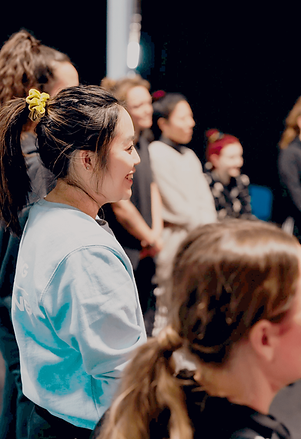Foot And Ankle Injuries In Dance
- Bethany Shum

- Jan 29, 2024
- 3 min read
Updated: Jan 2
By Beth Shum
Introduction
Professional dancers spend many hours on their feet training, and it is no secret that we see foot and ankle injuries accounting for many musculoskeletal conditions amongst this population.
The ankle joint is a hinged joint and its biomechanical function is very complex. Dancers' feet are often required to be in maximum plantarflexion and in a turned-out position. This position adds strain around the ankle joint, thus increasing the risk of acute and recurrent ankle injuries.

This blog post will explore the management of dance-related foot and ankle injuries.
Incidence rate
A recent study looking at the incidence and prevalence of injuries requiring medical attention in a professional ballet company showed an incidence of 3.9 per 1000 hours in women and 3.1 per 1000 hours in men with a prevalence of 91.5% of women and 79.2% in men (Mattiussi et al. 2021). That is approximately 9 in every 10 female dancers, and 8 in every 10 male dancers experiencing injuries requiring medical attention!
Risk factors
There are several risk factors that increase the probability of foot and ankle injuries in dancers. These factors include
Fatigue-induced overuse injury
Chronic instability
Foot anatomy
Metatarsophalangeal joint injury
Rigid hallux (Stiff great toe)
Increase foot plantar pressures
Footwear conditions
How to reduce the risk of injuries:
There are several strategies which can be used to potentially reduce the risk of injuries.
These strategies include:
Reviewing your dance's shoe conditions
Reviewing foot biomechanics in different regions of the foot.
gait analysis
jumps
peak force
Addressing the loading on the foot through strengthening and mobility exercises
Pain and swelling managment
Common conditions that may cause pain and swelling include:
Ankle impingement
Tendinopathies
Sesamoiditis
Metatarsal stress reaction
Sprains
Ligament strains
Lisfranc injury
To manage these conditions, relative rest, activity modification, ice and elevation of the injured area, and taking an anti-inflammatory such as ibuprofen (NSAIDs) are recommended.
Goals for Conservative Management

The aim of conservative management is to promote optimum recovery of the foot and ankle. This includes improving range of motion, active stability, and movement coordination.
Dance-Specific Rehabilitation
Rehabilitation should be specific to the style of dance and consider factors such as:
location of dance training
frequency of training and performance
quality of instructions
footwear
flooring
dancer’s schedule.



.png)





Comments